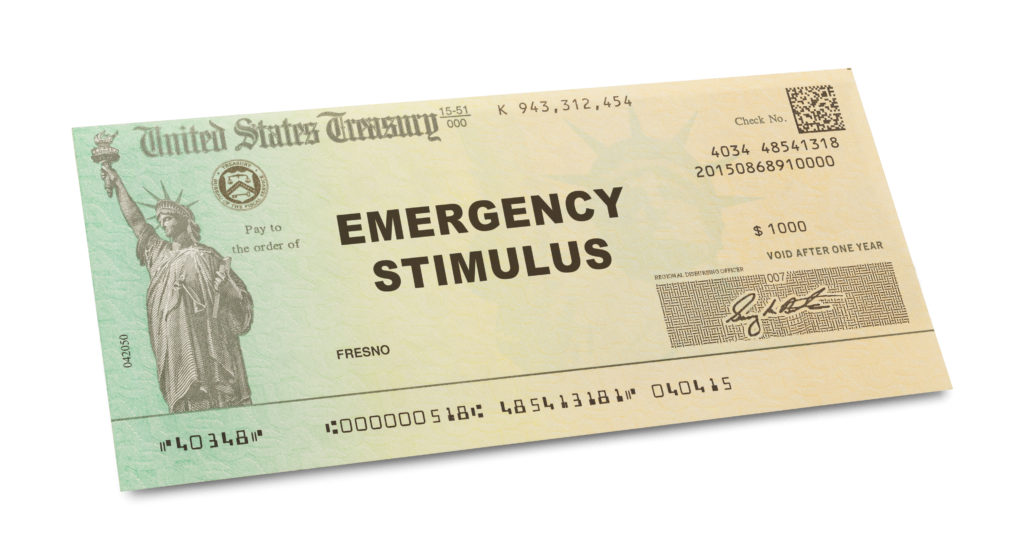
Credit: Pixelrobot/stock.adobe.com
Congress recently passed an economic stimulus package to help Americans get through the Coronavirus (COVID-19) pandemic. Known as the Economic Impact Payment, the stimulus provides a certain amount to each American and their dependents.
Who is eligible for the Stimulus Check?
All U.S. Citizens and resident aliens who:
- have a valid social security number;
- could not be claimed as a dependent by another taxpayer;
- and had gross income under certain limits.
How much money can I get?
Subject to certain income thresholds, most Americans will receive:
- $1,200 for individuals
- $2,400 for married couples
- $500 for each dependent child under 17 years old
Taxpayers are subject to income limits in order to receive the stimulus check. Once that threshold has been passed, your stimulus check will be reduced by $5 for every $100 above the income threshold. The income thresholds are based on your adjusted gross income and they are:
- $75,000 for an individual filer;
- $112,500 for Head of Household filer;
- $150,000 for Married/Joint Filers
If your income is less than the figures listed above you will receive the full amount of the stimulus. If you earn more, it will phase out, or be reduced, by $5 for each $100 in income.
The stimulus check will completely be phased out if you earn more than:
- $99,000 for individual filer;
- $198,000 for joint filer with no children.
How do I get a stimulus check?
You will receive the stimulus check directly deposited into your bank account if you:
- Filed a federal income tax return in 2018 or 2019 and included a bank account for direct deposit of a refund;
- Receive social security, disability, or survivor benefits;
- Receive Railroad Retirement benefits
What if I didn’t file tax returns, receive benefits, or have moved?
If you still qualify to receive a stimulus check but did not include a bank account for direct deposit a check will be mailed to you on the address listed on the tax return. BONUS INFORMATION: It may take the IRS several months to issue paper checks. Their plan is to print 5 million checks each week beginning on April 24, 2020. They will send checks first to those with the lowest gross income. Depending on your gross income it could be anywhere from late April to September before receiving your check. To receive the payment quicker you can contact the IRS.https://www.irs.gov/coronavirus/non-filers-enter-payment-info-here
If you have moved since filing your tax return and didn’t elect to receive direct deposit of a refund, you will need to inform the Internal Revenue Service. You should consider providing your bank account information in order to receive your stimulus payment quicker. https://www.irs.gov/coronavirus/non-filers-enter-payment-info-here
If you were not required to file a tax return because your income did not exceed the filing requirement, you can still request your stimulus payment by contacting the Internal Revenue Service and providing your information. Again, you should consider providing bank account information to receive the stimulus directly, otherwise you will receive a paper check in the mail. https://www.irs.gov/coronavirus/non-filers-enter-payment-info-here
Anything I should be aware of?
If you are subject to a garnishment or execution order, it is possible that your stimulus payment could be taken by creditors. If you have an execution order (where you’re bank account could be “garnished”), you might consider filing a bankruptcy to protect your stimulus payment if you have other debt you’re dealing with.
Contact me in advance to discuss what options you may have. Each person’s situation is unique. If I can be of help, please contact me by scheduling a free consultation at www.caldwell-lawfirm.com/schedule